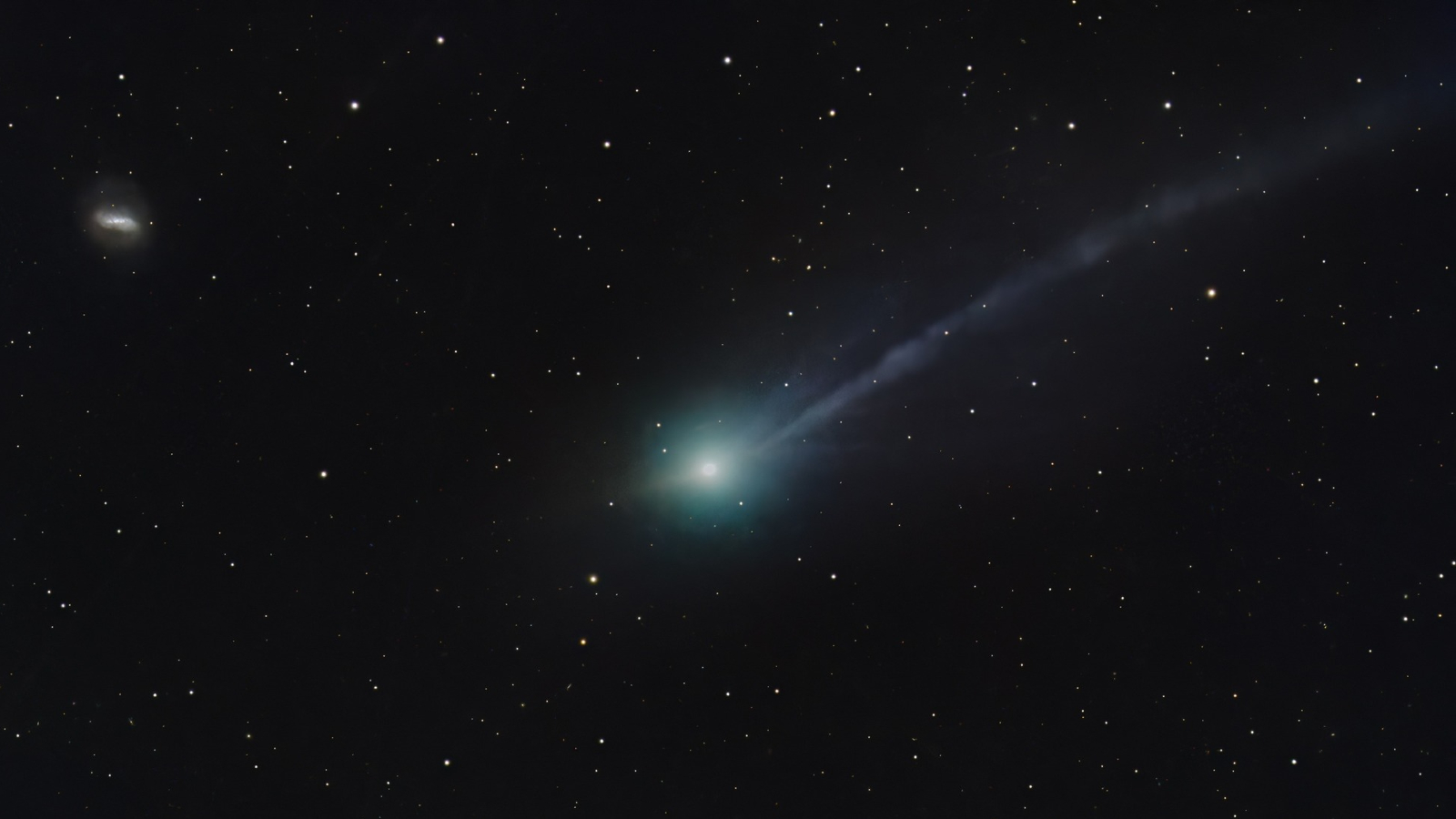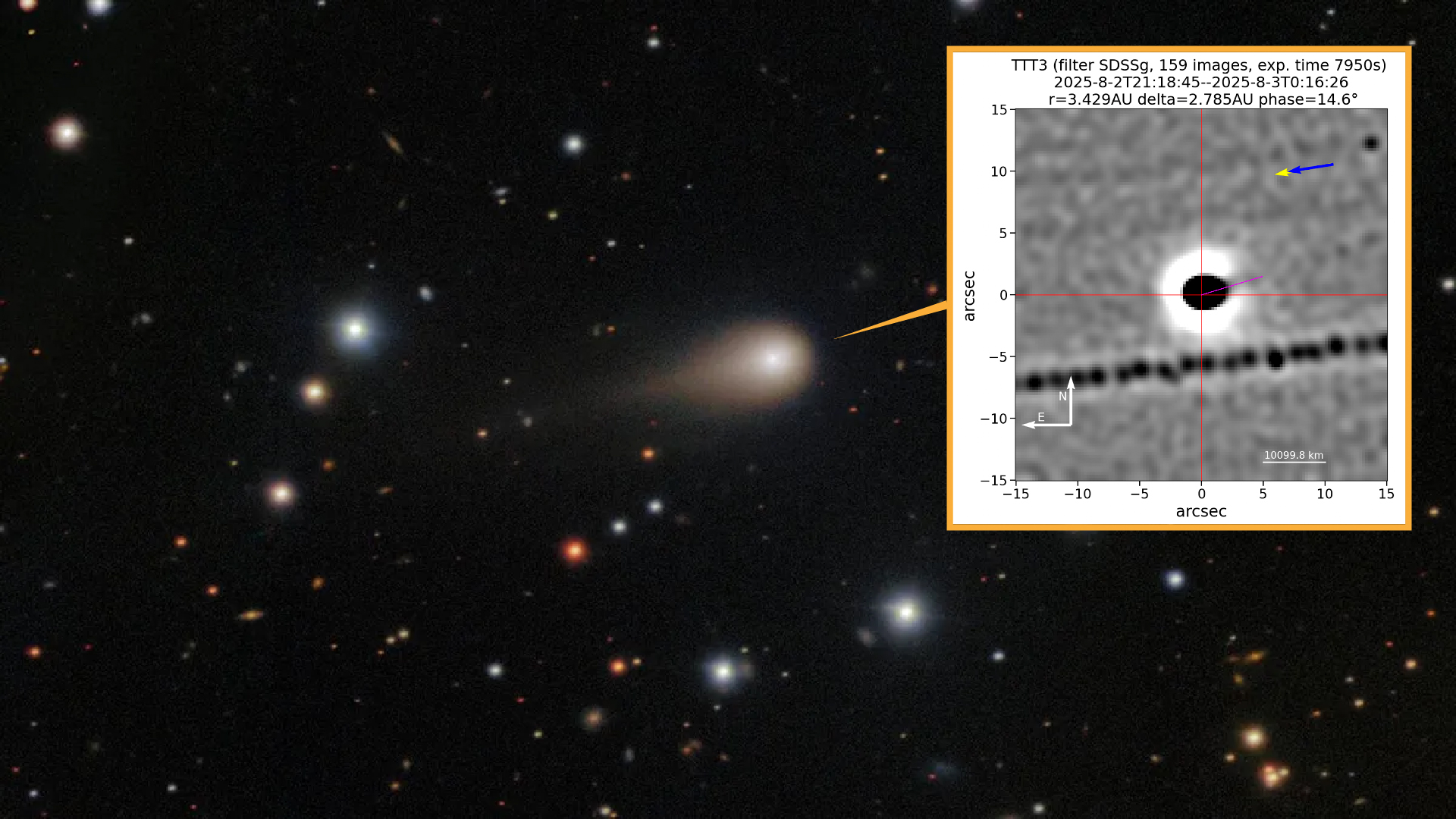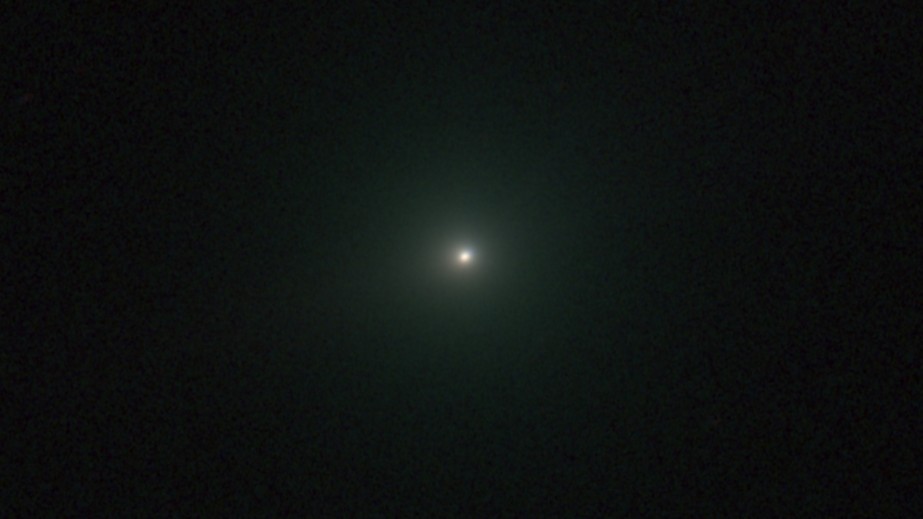'From another world': 3I/ATLAS photobombs a galaxy and shows off its multiple tails in stunning new image
An incredible new image shows the multi-tailed alien comet 3I/ATLAS shooting past a distant galaxy in the night sky. The stunning scene is a reminder of the object's perfectly natural interstellar origins, photographer Satoru Murata claims.

An astrophotographer has snapped a stunning shot of the interstellar visitor 3I/ATLAS photobombing a distant galaxy in the night sky. The remarkable image, which also captured the comet's multiple tails, is a reminder of the object's otherworldly nature — but that doesn't mean it was made by aliens, the photographer insists.
Satoru Murata, a New Mexico-based photographer who has previously worked on multiple astronomical research projects, captured the new image using a 0.2-meter (0.7 feet) telescope on Sunday (Nov. 16) shortly before sunrise. It shows a familiar green glow coming from 3I/ATLAS's coma, along with the comet's long ion tail and the reemergence of its shorter anti-tail, which is likely caused by excess dust blowing off its surface. In recent weeks, the comet briefly appeared to lose both these tails, although this was an optical illusion due to its position relative to Earth.
Eagle-eyed observers may also be able to see several smaller jets of gas shooting outward from the comet's coma. These are the result of "outgassing," which occurs when solar radiation heats comets' icy interiors, causing gasses to shoot out of cracks in their icy shells. This natural process provides a small amount of non-gravitational acceleration to the comet and was the basis of a recent rumor that wrongly claimed 3I/ATLAS had exploded.
In the top left of the image is the barred spiral galaxy NGC 4691, which is located around 70 million light-years from Earth. Seeing the interstellar comet alongside NGC 4691 "really gave the impression of the object being from another world," Murata wrote in a recent Facebook post. (However, the comet originated from a star system within the Milky Way, not another galaxy.)

While this new photo has given us an impressive glimpse of 3I/ATLAS, astronomers are eagerly awaiting new high-definition NASA photos of the comet, which will be released on Wednesday (Nov. 19). These images were captured by NASA's Mars Reconnaissance Orbiter during the comet's close flyby of the Red Planet on Oct. 3 but have remained unreleased due to the recent government shutdown.
On Friday (Nov. 14), the European Space Agency revealed that its own Mars photos had helped researchers narrow down 3I/ATLAS's predicted trajectory through the solar system.
Interstellar visitor
3I/ATLAS is the third interstellar object discovered to date and was first spotted in early July, shooting toward the sun at more than 130,000 mph (210,000 km/h). It likely originates from the "frontier" region of the Milky Way and could be up to 7 billion years old, making it significantly older than our solar system.
Get the world’s most fascinating discoveries delivered straight to your inbox.
The comet recently reemerged from behind the sun's far-side relative to Earth, where it reached its closest point to our home star on Oct. 29. The trip around the sun was eventful, with 3I/ATLAS experiencing an unexpected brightening event and a temporary color change. The comet has also displayed several other anomalous characteristics in recent months, including a highly irradiated surface and an overabundance of certain chemicals.

These unusual traits have led some researchers to controversially propose that 3I/ATLAS might be an alien spaceship in disguise. However, the majority of the astronomical community agrees that the object is almost certainly a comet. (Similar claims were also made about the first interstellar object 'Oumuamua, which was discovered in 2017 and is most likely an asteroid.)
Murata, too, is certain of 3I/ATLAS's cometary status.
"No, it's not an alien mothership, and the probability that it's any type of object created by extraterrestrial civilization is close to zero," he wrote in an Instagram post about the new photo. "As people have said, if it looks like a duck and behaves like a duck, it's a duck."
3I/ATLAS will reach its closest point to Earth on Dec. 19, when it will reach a minimum distance of 168 million miles (270 million km) from our planet.

Harry is a U.K.-based senior staff writer at Live Science. He studied marine biology at the University of Exeter before training to become a journalist. He covers a wide range of topics including space exploration, planetary science, space weather, climate change, animal behavior and paleontology. His recent work on the solar maximum won "best space submission" at the 2024 Aerospace Media Awards and was shortlisted in the "top scoop" category at the NCTJ Awards for Excellence in 2023. He also writes Live Science's weekly Earth from space series.
You must confirm your public display name before commenting
Please logout and then login again, you will then be prompted to enter your display name.
